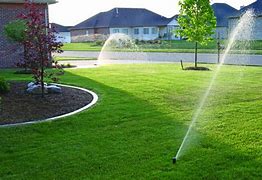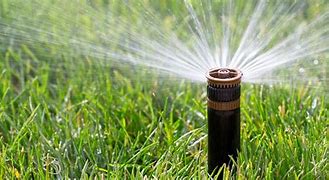Automatic irrigation systems are a modern convenience that keeps our landscapes thriving with minimal effort. However, like any home system, sprinklers can develop issues over time that require attention. Recognizing the warning signs early can save you from costly water bills, landscape damage, and more extensive repairs down the line.
1. An Unexpected Drop in Water Pressure
When your sprinkler heads suddenly start spraying with less force or reach than usual, you're likely dealing with a pressure problem. This often indicates a blockage somewhere in the system.
DIY Solution: Inspect individual sprinkler heads for debris and clean them if necessary. If only one head is affected, the fix might be as simple as removing and cleaning that particular head.
When to Call a Pro: If multiple zones show reduced pressure or if cleaning the heads doesn't solve the issue, you might have a more significant blockage or pressure regulation problem that requires professional diagnosis.
2. Sudden and Unexplained Increases in Water Bills
A sudden spike in your water bill without a change in your watering schedule is a red flag. This typically indicates a leak somewhere in the system that's wasting water even when the sprinklers aren't actively running.
DIY Solution: Check for obvious leaks at sprinkler heads and replace any damaged ones.
When to Call a Pro: If your water bill remains high after addressing visible issues, you likely have an underground leak that requires professional equipment to locate and repair.
3. Problematic Control Valves
Control valves regulate water flow to different zones in your sprinkler system. If a valve becomes stuck, you might notice areas that remain wet constantly or zones that never receive water.
DIY Solution: For seized valves, try applying a penetrating lubricant like WD-40 and gently work the valve with pliers. Never force a valve, as this can cause more damage.
When to Call a Pro: If the valve remains stuck or if water continues flowing when the valve is closed, replacement is necessary. This can be complex depending on the valve's location and may require professional assistance.
4. Visible Water Leaks
Puddles, wet spots, or unusually lush patches of grass between sprinkler heads are usually clear signs of underground leaks. Besides wasting water, these leaks can damage your landscape and potentially your home's foundation if left unchecked.
DIY Solution: Replace obviously damaged sprinkler heads and check that all connections are tight.
When to Call a Pro: For leaks in the main line or buried lateral lines, professional repair is usually necessary as these require excavation and proper pipe repair techniques.
5. Soil
Erosion Around Sprinkler Heads
When you notice soil washing away near sprinkler heads or in certain areas of your yard, your system may be overwatering or misdirecting spray patterns.
DIY Solution: Adjust sprinkler head angles and run times to prevent excessive water flow in problem areas.
When to Call a Pro: If erosion continues despite adjustments, you might need professional help to redesign that portion of your system for better water distribution.
6. Uneven Watering Patterns
Brown patches alongside overly saturated areas indicate poor water distribution. This wastes water and stresses your landscape.
DIY Solution: Check for clogged nozzles, misaligned heads, or heads that have sunk below grass level. Clean, adjust, or raise heads as needed. Ofteh the increasing thatch of your grass may require a head to be lifted in order to provide proper distribution.
When to Call a Pro: If the problem persists after basic adjustments, you might need zone modifications or pressure regulation that requires professional expertise.
7. Dead Zones or Dry Areas
When entire sections of your yard remain dry despite regular watering cycles, you may have inactive zones in your system.
DIY Solution: Check your controller to ensure all zones are programmed correctly. Try manually activating the problem zone from the controller.
When to Call a Pro: If the zone still won't activate, the issue could be electrical, involving solenoids, wiring, or control board problems that typically require professional diagnosis and repair.
8. Unusual Noises During Operation
Your sprinkler system should operate relatively quietly. Hissing, whistling, or banging noises during operation indicate potential problems.
DIY Solution: For water hammer (banging sounds), check for loose pipes. For hissing, look for small leaks at connection points.
When to Call a Pro: Persistent unusual sounds often indicate pressure problems or air in the lines that may require system adjustments a professional should handle.
9. Controller Malfunctions
Modern sprinkler controllers are sophisticated devices. If yours displays error codes, has an unresponsive screen, or fails to follow programmed schedules, it needs attention.
DIY Solution: Try resetting the controller to factory settings and reprogramming it. Check that the power supply is consistent and that any rain sensors are functioning properly.
When to Call a Pro: If reset attempts fail or if the controller continues to behave erratically, you might need professional diagnosis or controller replacement.
10. Recurring Electrical Issues
If your sprinkler system frequently trips circuit breakers or fails to power up, electrical problems are likely to blame.
DIY Solution: Check for obvious issues like damaged outdoor outlets or wet connections.
When to Call a Pro: Electrical problems involving the controller, solenoids, or buried wiring typically require professional repair to avoid safety hazards and ensure proper function.
Maintaining Your Investment
A well-maintained sprinkler system is an asset that enhances your property's value and beauty while conserving water. By staying alert to these warning signs and addressing issues promptly, you'll extend your system's lifespan and keep your landscape looking its best. Remember, your asset is more than just the sprinkler system, it is your lawn, flower beds, shrubs and trees - everything the sprinkler system waters.
For simple repairs like cleaning heads or making minor adjustments, most homeowners can handle the job with basic tools. However, don't hesitate to call in a professional for more complex issues involving electrical components, buried pipes, or system-wide pressure problems.
Remember that seasonal maintenance—including proper winterization in colder climates and regular spring inspections—can prevent many common problems before they start. Taking a proactive approach to sprinkler maintenance saves both water and money while keeping your outdoor spaces healthy year-round.
WHO DETERMINES THE VALUE OF YOUR HOME!









